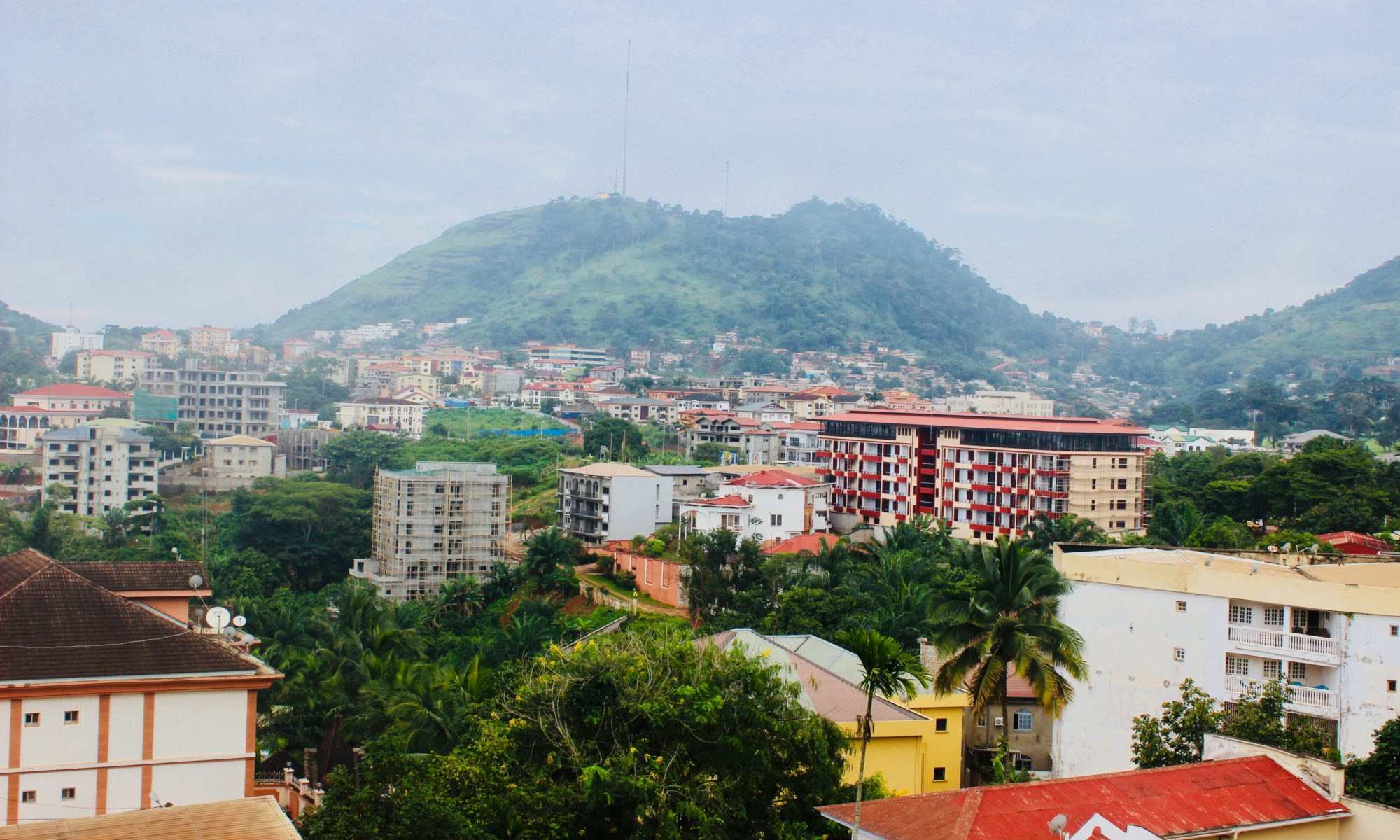Last weekend Maman Lisette, Arjun’s host mom, invited us both to go with her on her weekly trip to the market. Cameroonians (mainly the women) do almost all their shopping at one of the many outdoor markets around the city. Hence why there are very few grocery stores and most of them have empty shelves and very old, very dusty items. If you want to buy food here, your best bet is buying it off the street. It is fresher, MUCH cheaper and bartering with the locals has definitely helped us feel like we fit in a bit more. So, early Saturday morning, we headed off in Maman Lisette’s old-fashioned, vintage-looking Mercedes. The market we went to is only a few minutes from our street and is called the Marché Rond Point Express. We got out of the car to an already humid, hot day and headed into the market.
At first glance, the market is chaotic, busy, unorganized and would NEVER meet U.S. or European health and safety standards. It is set up along a series of dirt roads (which are constantly mud here because it’s the rainy season) and stalls are set up on either side with more people selling goods down on the ground so there is maybe a foot-wide path in the middle to walk on. Meat hangs dripping from hooks with flies swarming, every tropical vegetable and fruit you can think of is displayed on plastic sheets, propped against steps or even held in a plastic tub on top of someone’s head. We passed a meat stall first, stopping to watch a man with a machete hoist an entire pig up onto a wooden table and begin to butcher it. He asked us if we wanted the head, but we politely declined. The ears, the hooves and the tail were also up for grabs and are delicacies… (we’ve already eaten cow hoof here). Maman Lisette had to stop by a stall that crushes hot peppers because Cameroonians cannot let a meal go by without using hot peppers. The sauce is put on everything! It is delicious though. The peppers when raw are vibrant red, orange, yellow and green, depending on the variety and the degree of heat.
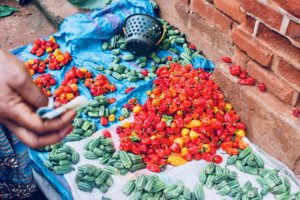
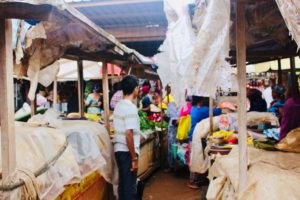
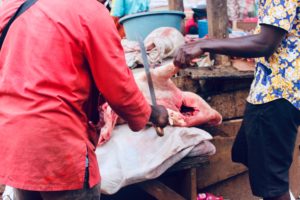

Next was the fish stall where the smell was overpowering and the area was crowded so we waited outside and watched a young girl de-scale, clean and fillet fish with dizzying speed. Scales and blood flew everywhere, but we got our fresh fish quickly. Maman Lisette was able to pick out live fish from a tub and have them wrapped up. We walked through the busiest part of the market passing anything from enormous avocados to cassava to dried eels, stopping to measure out huge quantities of rice, flour, and beans. Maman Lisette was getting enough dry ingredients to last three months! At this point, my arms were breaking from holding the bags stuffed with fruit, vegetables and fish (no such thing as cross-contamination here apparently) so we hailed a boy with a wheelbarrow to load our things into. These boys help people bring all their goods home or to their cars in the wheelbarrows. How they navigate a wheelbarrow through that market is beyond me! Luckily, we were there on a relatively cloudy, cool morning, because I can’t imagine the market with the sun as another heat factor. Already the smells and the number of people were dizzying and slightly overwhelming. It is very common for people to do their shopping Saturday morning because everyone works all week and Sundays are a day of rest (almost nothing is open). Suffice to say, it seemed like all of Yaoundé was at the market! But it is experiences like these that show what it is really like to live in Yaoundé.
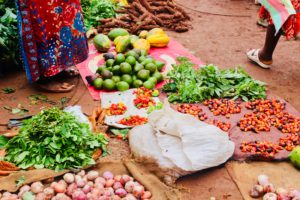
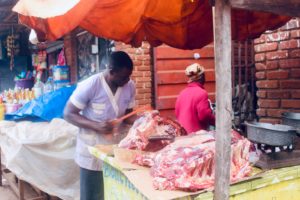
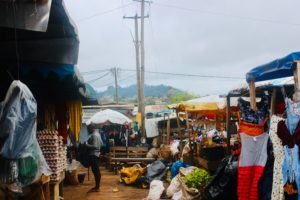
We also recently made a trip to the Mvog-Betsi Zoo that is a few minutes’ drive from the Middlebury Center where we have some of our classes. We didn’t have high hopes that the zoo would have clean conditions, well-trained staff or humanely-treated animals, but we wanted to give it a try. The entrance had a faded, peeling sign for the zoo and we were greeted by a sole woman who gave us a hard time about having a camera and tried to make us pay the equivalent of $20 extra to take photos with it. People here tend to be VERY picky and sensitive about any kind of photos or videos. I don’t know what they think I’m going to use them for…but we brushed it off and headed in. The zoo was a ghost town, slightly creepy because it had a bunch of old playground equipment that when new (maybe in the 1950s when the zoo was built), was part of a play center. We saw many different kinds of monkeys and baboons, some of them in relatively open, spacious cages with grass and trees, some of them in wire cages barely large enough to hold them. They were utterly unafraid of us and came right up to the fences (which, by the way, had gaping holes and did not look like they were doing much to keep the little guys in). One plus side of this being a relatively non-professional operation: we were able to get within touching distance of the animals. We could put our hands right up against the cages (we didn’t though because…rabies). We then visited the lions who were slightly battered and bloody, the snakes and lizards and the birds. The African Grey-Faced parrots were very cool as was the hilarious monkey that escaped from its cage right next to us and was running around. It went back in by itself in the end. We saw two crocodiles (one being a Nile Crocodile) which didn’t move an inch and we got propositioned by a random man who wanted to be our tour guide (for a small fee, of course). We politely declined although the offer to hold the snakes was tempting.
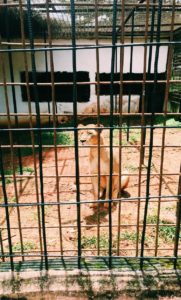

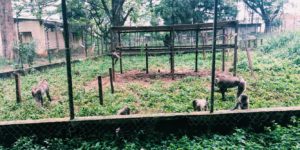


All in all it was a fun, different experience that really showed us some differences between the way animals are treated here and the way they are generally expected to be treated in the Western world. Cameroonians visiting the Mvog-Betsi zoo don’t think anything of the cramped, poorly cleaned conditions, the tied-up monkeys or the bleeding ears of the lions. It reminded me of something our professor (a catholic nun) had said during our Cameroonian Criminal Law class at the University of Central Africa. She said that she doesn’t believe Cameroon should have any laws that punish people who abuse animals. To our dismay, the whole class nodded and murmured in agreement. Animals here are considered to be only good when they are useful, whether to get rid of vermin, to protect a home or to eat. Keeping pets is a luxury of the rich and is considered to be something that only Westerners do. Even in our neighborhood, Montée Jouvence, there are stores selling cats and dogs to eat, and we have seen such animals being cooked in the street. It is sobering and shocking for us coming from outside of the country, but here in Cameroon, it is part of the culture. As Arjun’s host sister Morgane said, “It’s just like eating cow!”. I don’t agree with her, but it’s yet another example of trying to embrace a different culture and a different context to the one I am used to.

